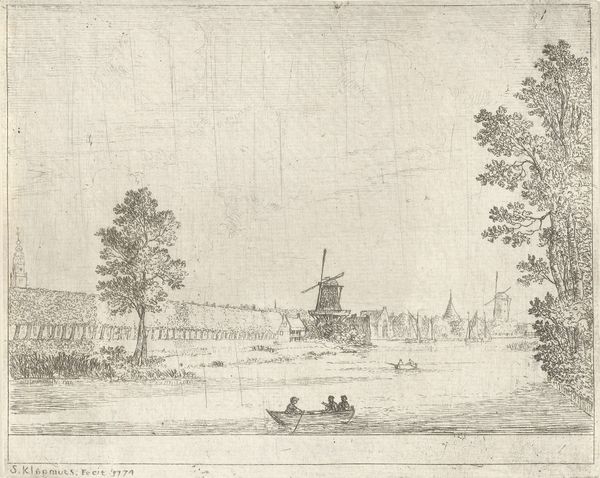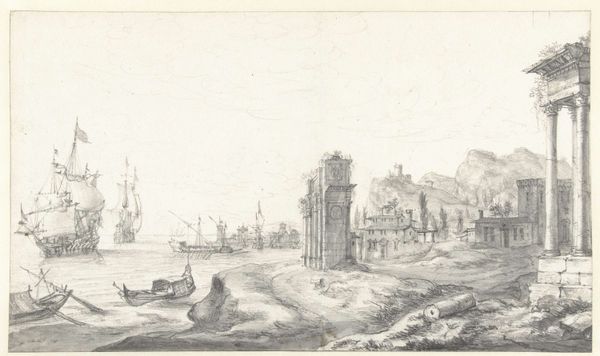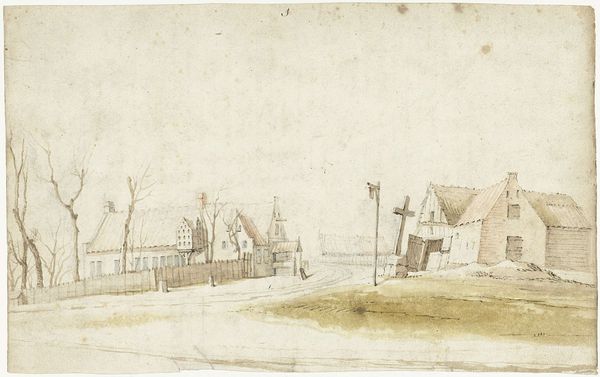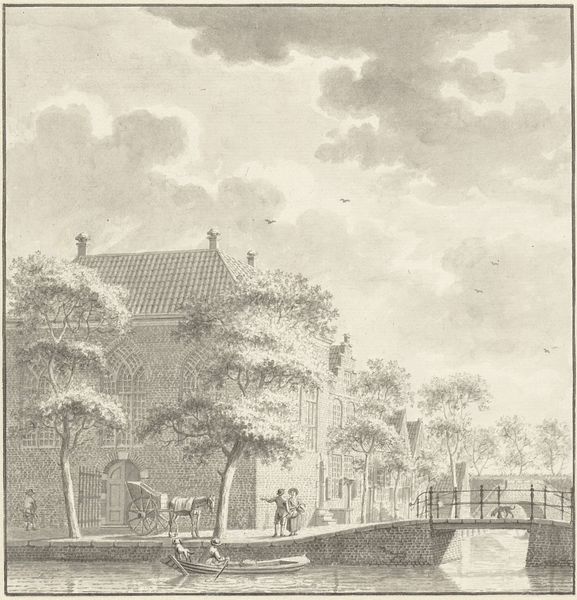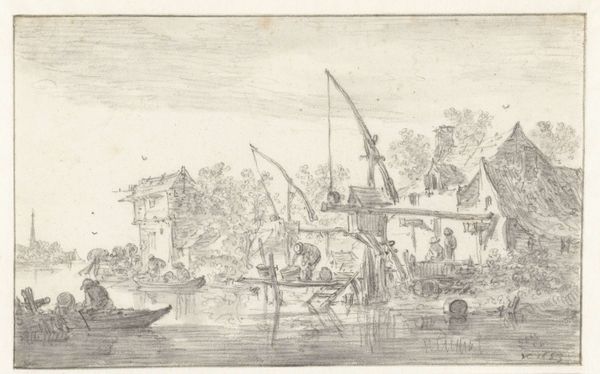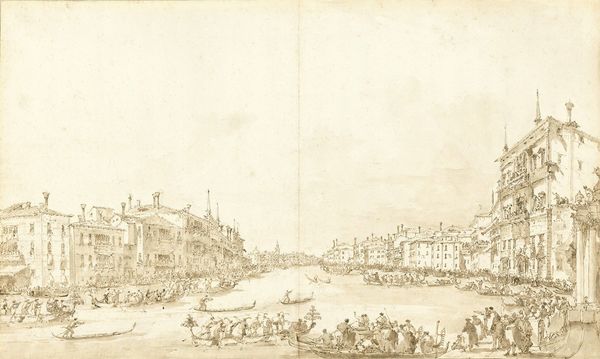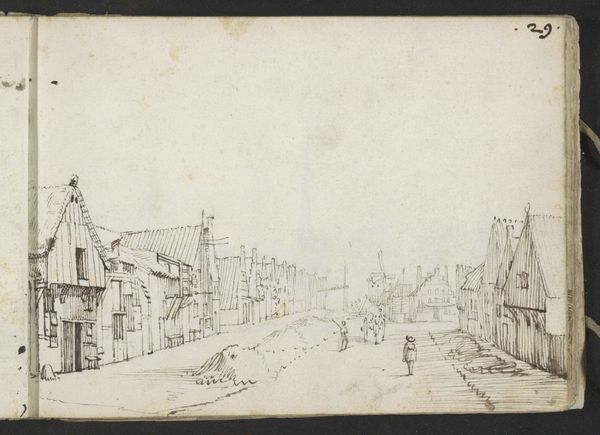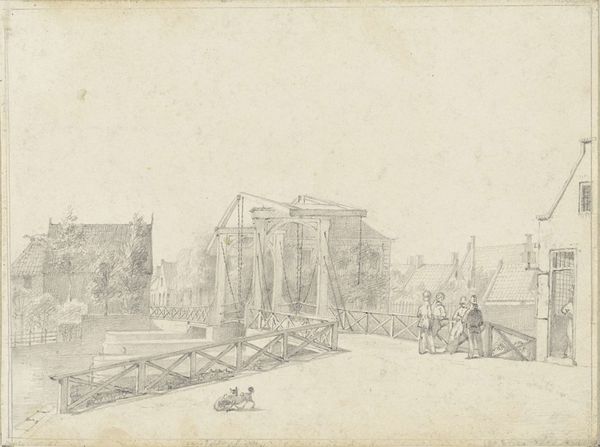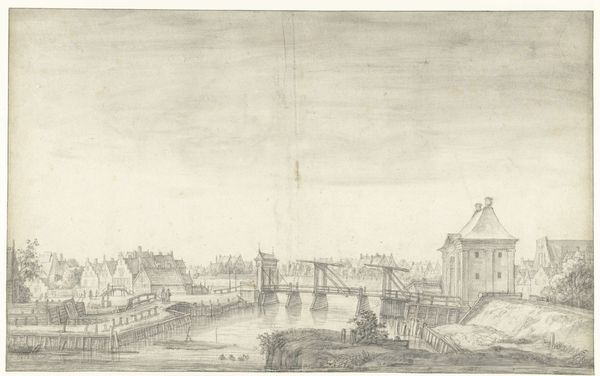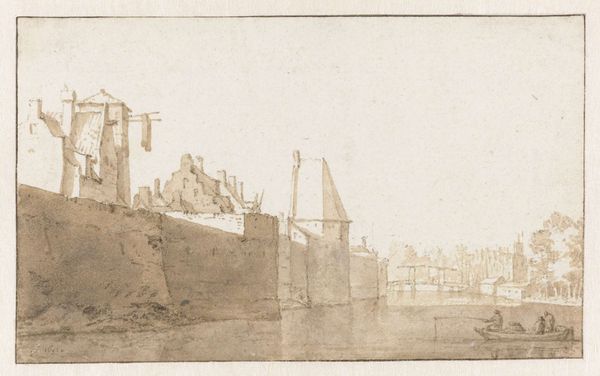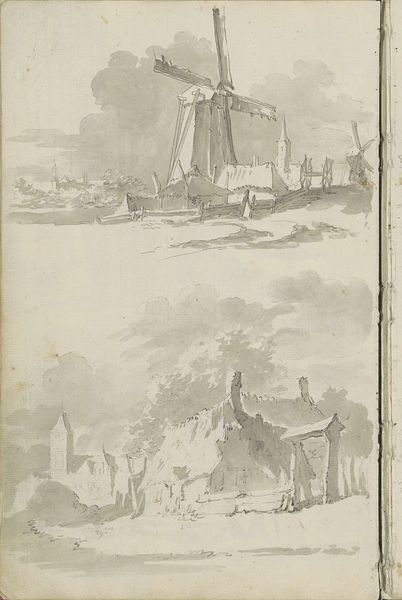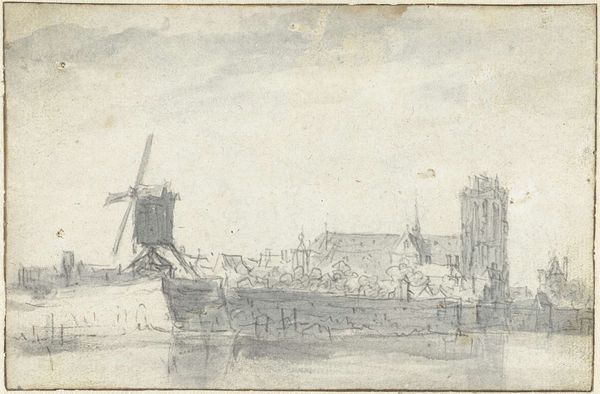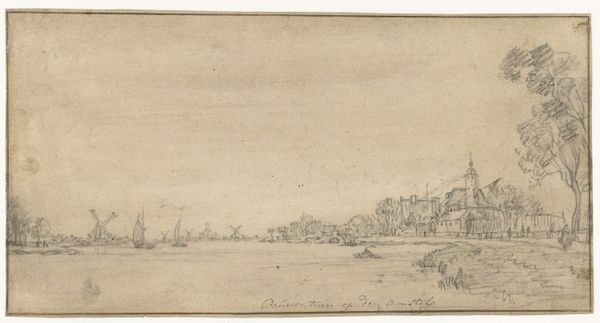
drawing, pencil
#
drawing
#
dutch-golden-age
#
landscape
#
pencil
#
cityscape
Dimensions: height 163 mm, width 155 mm
Copyright: Rijks Museum: Open Domain
Editor: This is "De Hoofdpoort op het Oude Hoofd te Rotterdam" by Cornelis Pronk, made sometime between 1701 and 1759. It's a pencil drawing. The lightness of the lines almost gives it a dreamlike quality, but there's also a precision in the architectural details. What do you see in this piece? Curator: The interplay of light and shadow, or rather the suggestion of it, is quite compelling. Notice how Pronk uses varying line weights to define the forms. The buildings, though rendered with a delicate hand, possess a structural integrity due to this contrast. Observe the composition as well. How does the gate's architecture frame the bustling activity near the water? Editor: The gate does act like a frame. The eye is drawn from the figures in the foreground, through the gate, to the people and boats on the water. It creates depth. Curator: Precisely. The lines direct our gaze through the picture plane, offering a constructed viewpoint. Did you observe the minimal use of hatching and cross-hatching? Pronk primarily depends on contour and line modulation. The absence of robust shading lends a somewhat ethereal quality to the architectural and nautical components, wouldn’t you agree? Editor: Yes, it makes everything seem very… airy. The boat almost blends into the buildings behind it. Curator: A visual harmony is crafted by this restrained technique. Think of semiotics. How does Pronk encode space, depth, and perspective? It's less about capturing reality and more about presenting a constructed visual syntax of the port. What meaning do we derive from this? Editor: I guess I hadn’t thought about it as a deliberate construction of signs, but I see what you mean. It’s more than just a picture; it’s a structured representation. I learned something new today, thank you. Curator: Indeed. Looking beyond the representational aspect into the compositional choices offers new readings. An analytical focus enhances one’s comprehension of the piece’s internal coherence.
Comments
No comments
Be the first to comment and join the conversation on the ultimate creative platform.
